Tips for growing chives: Letting them bloom
Don't be afraid to let your chives bloom! Use this method for growing chives to enjoy the beautiful flowers and harvest fresh chives at the same time.
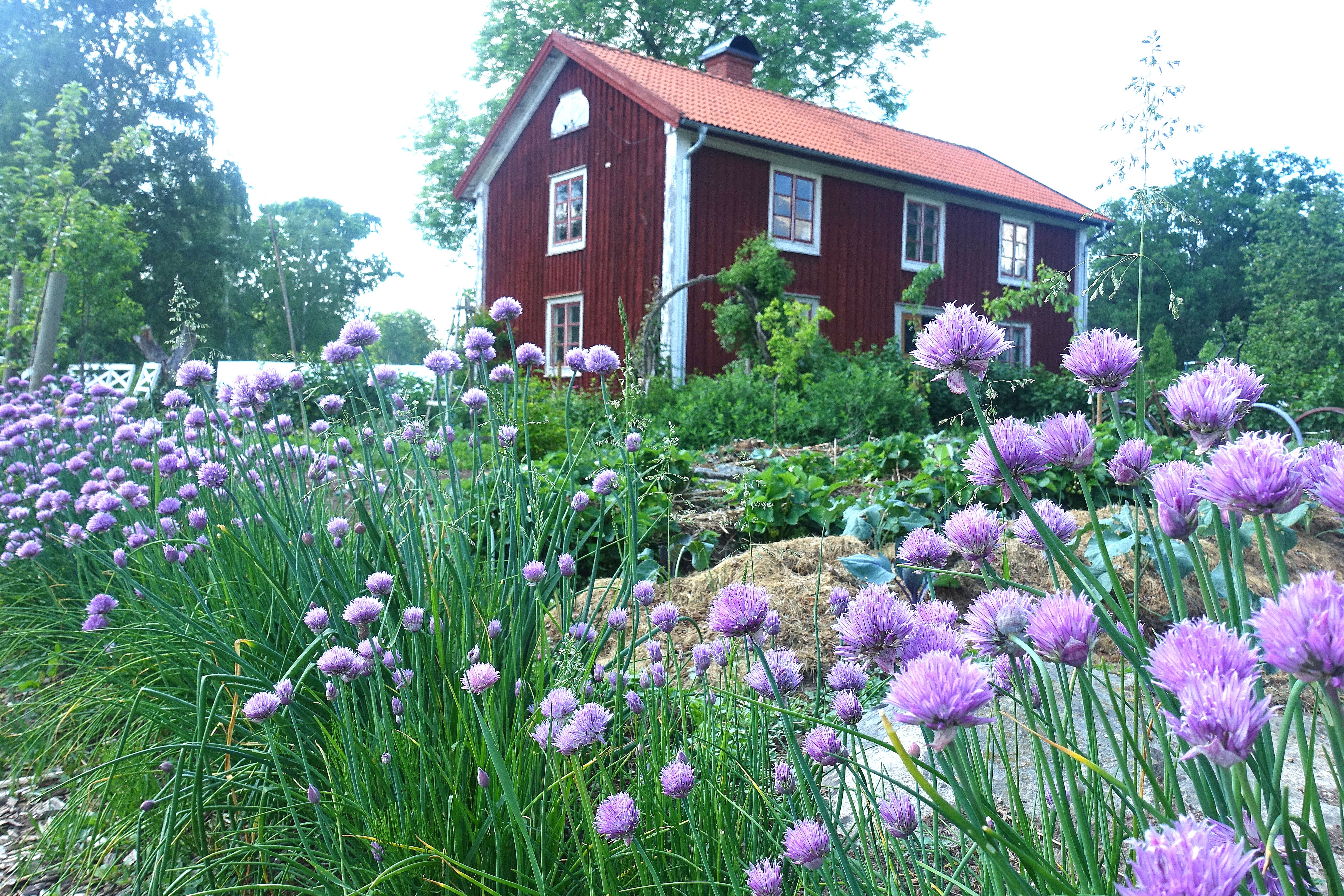
This is where I'm growing chives in my kitchen garden. Look how beautiful these blooming chives look!
My chives are blooming! It looks like a bright purple creek is running through the middle of my kitchen garden. The tufts are huge and some of the bulbs are as large as my little finger! Try frying them up in some olive oil and eat them as a side dish. Yum!
But what about the flowers then? Should you really let your chives bolt? Well, there's really no harm in letting your chives bloom, but your harvest might get smaller if you do. Most plants will produce smaller leaves when there are flowers too. The flower stalk is usually also hard and you can't eat it.
Despite this, I'm not sorry about letting my chives bloom. The flowers are only there for a short while and I intend to enjoy them while I can.
Read more: Get the smart garden tool belt SARA here!
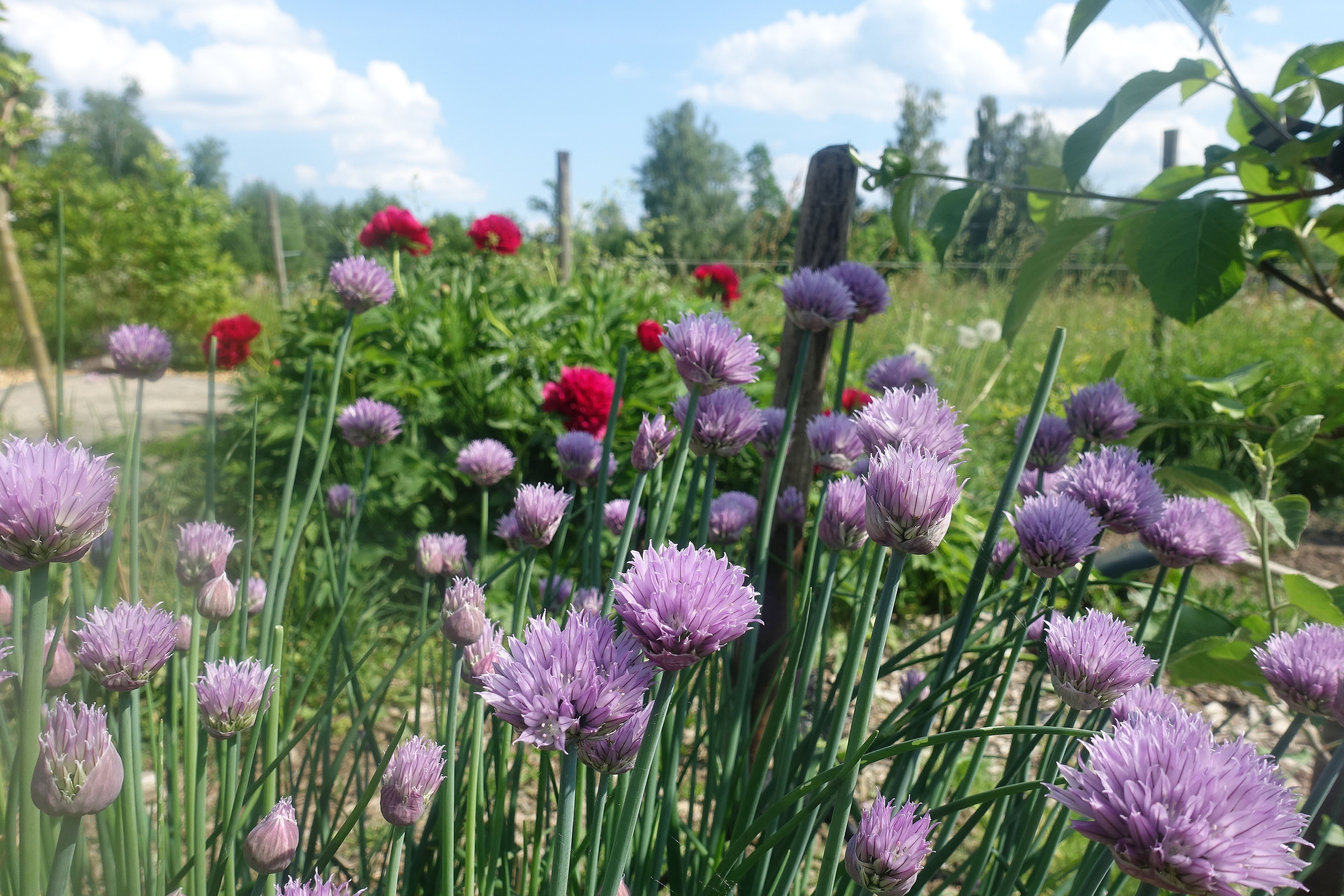
My chives bloom together with my beautiful peony here in my garden. What a beautiful combination!
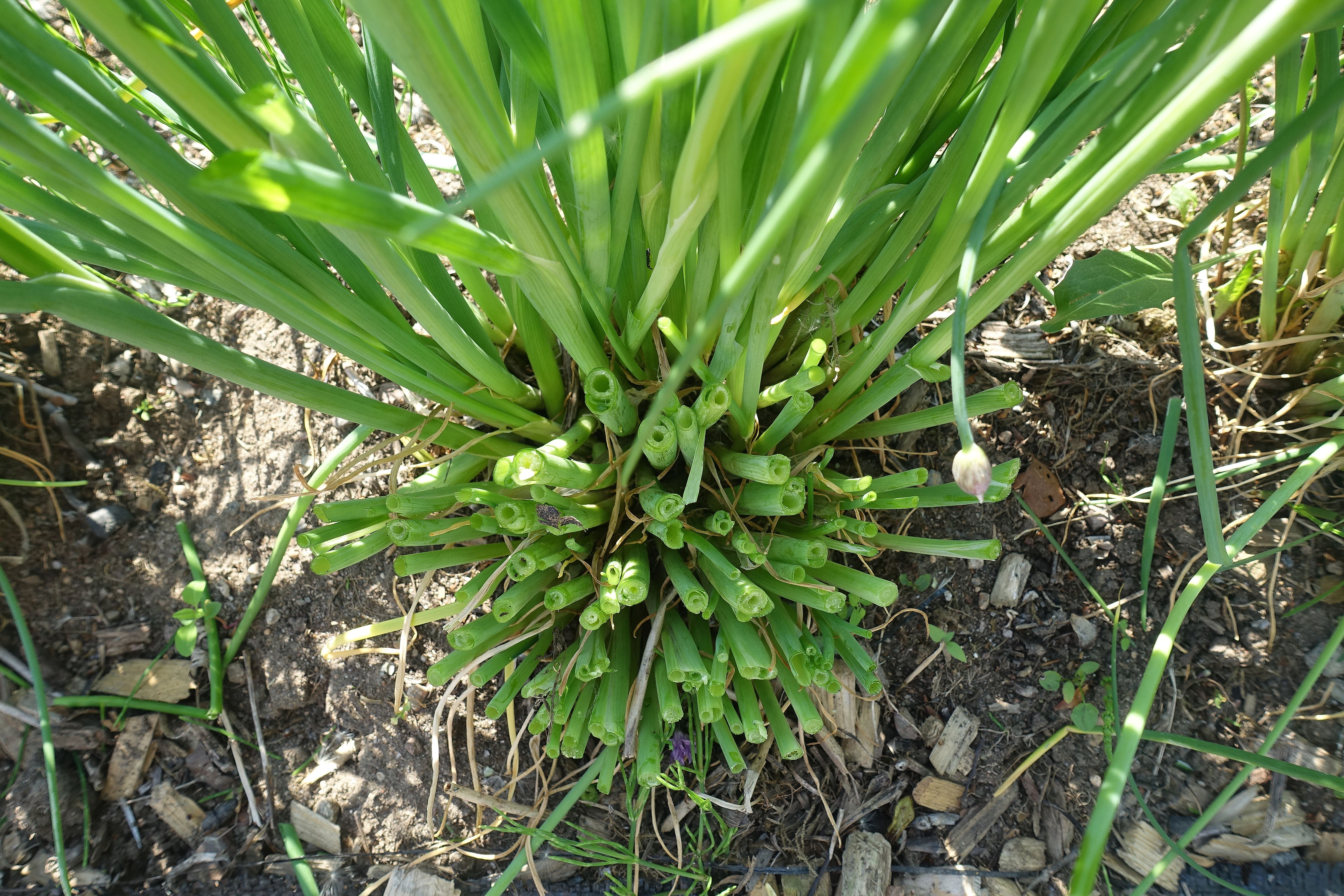
Trim half the tuft and leave the rest.
Trim your chives for new growth
The best way to get both flowers and a good harvest is to trim the plant down. Do this when the first flower buds are just developing. Trim half the tuft like in the picture above and leave the rest. This way, you get the best of two worlds. One half of the tuft will start developing flowers and the other, trimmed half will produce a nice fresh harvest of chives.
I chose to cut the plants along the edge that faces the pathway and decided to let the flowers face the other way. Now, I can see the beautiful flowers from my living room window and I don't even notice that the plants have been trimmed.
Use for mulch
I usually get a few baskets full of plant parts after trimming them. Right now, I'm using all the plant material from growing chives for mulch in the garden beds. The same goes for the chives. Put the material in a garden bed with larger sturdier plants, for example potatoes. Check out this clip to learn how to use mulch in your garden: Time to start mulching!
Remember that the chives will keep blooming as mulch too. A few seeds might start to germinate to but they usually don't develop plants. I think it's so beautiful, the bright purple flowers look like jewels on the ground!
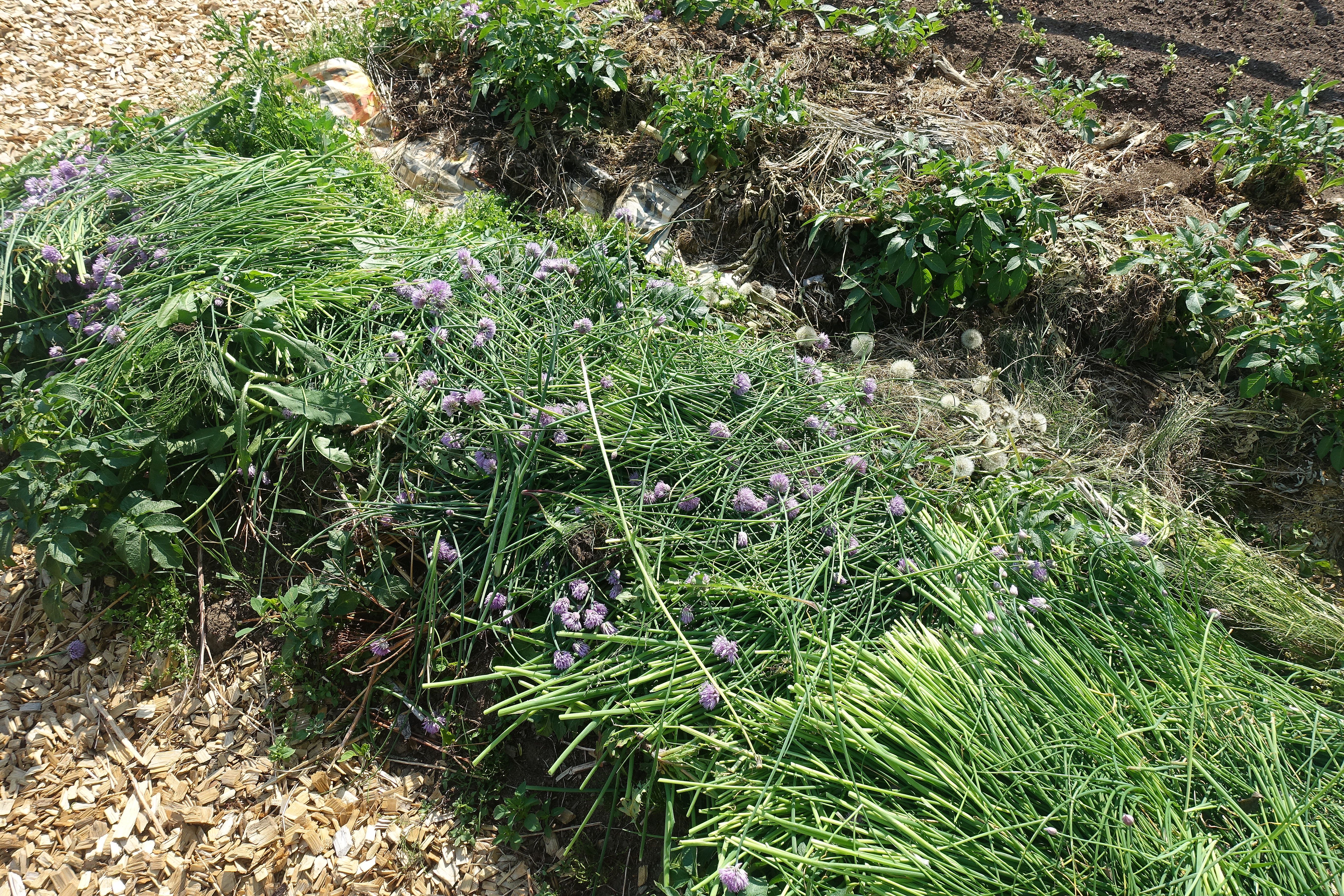
The chives I cut down are perfect as mulch. I decided to put my chives on top of my potatoes.
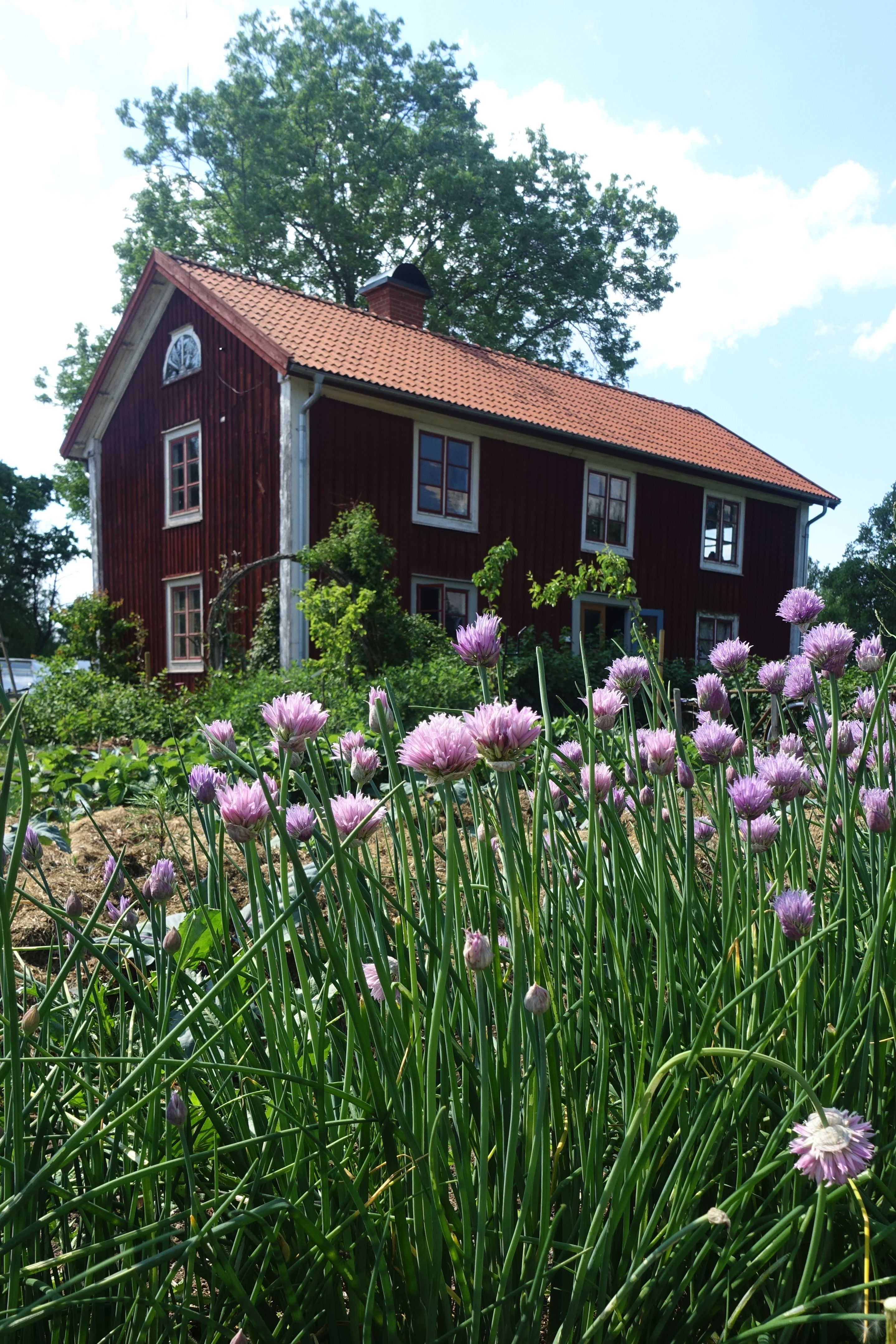
The chives look so beautiful, so I don't want to cut them all down. When I cut half of the tuft, I get both flowers and a nice harvest of chives.
Trim your chives again in summer
It's time to trim the flowering part when the chives have bloomed. By now, the first half of the tuft has grown nicely. This half will start to bloom later in summer and then I'll repeat the cycle. Very handy!
You can also use this method for growing chives when you want to harvest them. Trim a third of the plants and leave the rest. The row will look really nice and full this way. Don't be afraid to trim the tufts from time to time, even though you might not be able to eat it all at once. The chives will grow back up and look really nice and fresh!
/Sara Bäckmo



Leave a Reply
You must be logged in to post a comment.